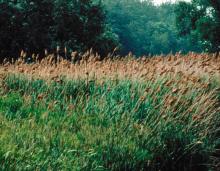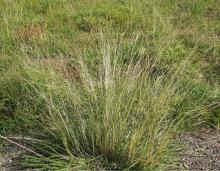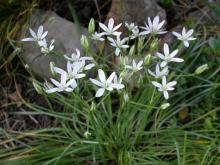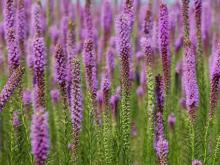Wildflowers, Grasses and Other Nonwoody Plants
Media

Species Types
Scientific Name
Phragmites australis australis
Description
Common reed is both native and exotic, but it’s the exotic subspecies that has become an invasive problem. Taking over wetlands with its dense stands, it changes the plant and animal communities and even the way the water flows.
Media

Species Types
Scientific Name
Bothriochloa ischaemum
Description
Yellow bluestem is a nonnative, aggressive, weedy degrader of pasturelands that escapes cultivation and endangers native habitats. It blooms in Missouri in late June to July, far earlier than our native bluestems.
Media

Species Types
Scientific Name
Tradescantia longipes
Description
Dwarf spiderwort is a low-growing perennial with bright magenta, purple, or purplish-blue flowers with three petals arranged in a triangular pattern. It blooms in Ozark woodlands in April and May.
Media

Species Types
Scientific Name
Nothoscordum bivalve
Description
False garlic looks like a wild garlic or onion plant, but it doesn’t smell like one. The flowers can be white, yellowish, or greenish, and they appear in spring and sometimes also fall.
Media

Species Types
Scientific Name
Ornithogalum umbellatum
Description
Star of Bethlehem is an introduced exotic plant that makes clusters of bright white flowers in the spring. It reproduces prolifically by forming a multitude of bulbs underground.
Media

Species Types
Scientific Name
Dalea purpurea (formerly Petalostemon purpureum)
Description
Purple prairie clover is a legume of prairies, glades, and other open places. Its unusual flowering heads ringed with rose-magenta flowers and its attractive foliage add special interest in the home garden.
Media

Species Types
Scientific Name
Liatris pycnostachya
Description
Prairie blazing star has an unbranched stalk with many densely crowded, rose-purple flowerheads. It is a signature wildflower of the tallgrass prairie.
Media

Species Types
Scientific Name
Asclepias verticillata
Description
Whorled milkweed has rounded clusters of small white flowers. The leaves are soft, threadlike, and grow in whorls from the stem. It occurs in upland prairies and fields.
Media

Species Types
Scientific Name
Pycnanthemum tenuifolium
Description
Slender mountain mint has smooth, square stems, opposite, narrow leaves, and dense heads of 2-lipped white (or lavender) flowers. Aromatic and minty, it can be grown at home in the herb garden, and its leaves used for seasoning food.
Media

Species Types
Scientific Name
Asclepias hirtella
Description
Prairie milkweed’s full, rounded clusters of small, delicately purple-tinged flowers set it apart from other prairie milkweeds.
See Also
About Wildflowers, Grasses and Other Nonwoody Plants in Missouri
A very simple way of thinking about the green world is to divide the vascular plants into two groups: woody and nonwoody (or herbaceous). But this is an artificial division; many plant families include some species that are woody and some that are not. The diversity of nonwoody vascular plants is staggering! Think of all the ferns, grasses, sedges, lilies, peas, sunflowers, nightshades, milkweeds, mustards, mints, and mallows — weeds and wildflowers — and many more!





















